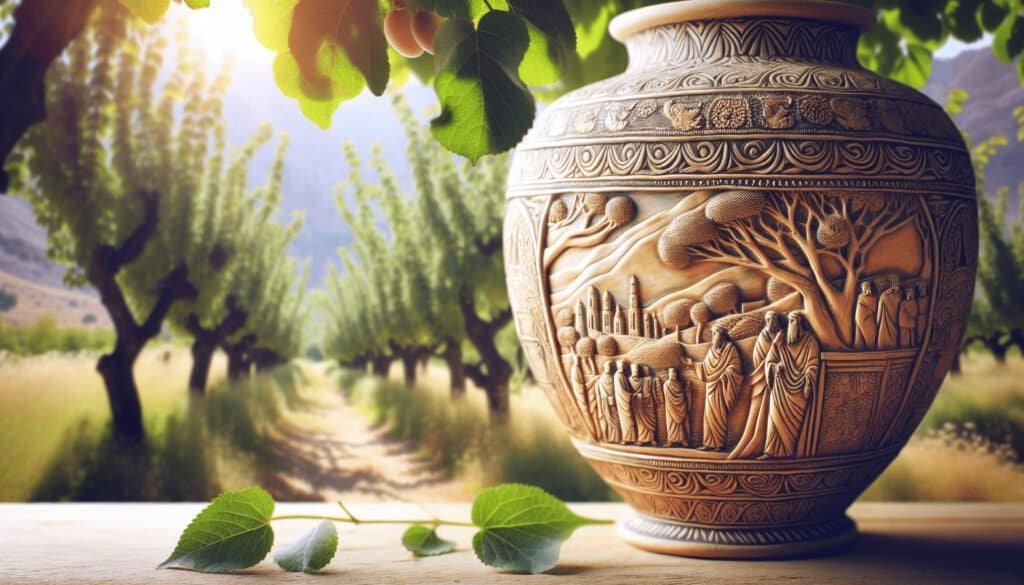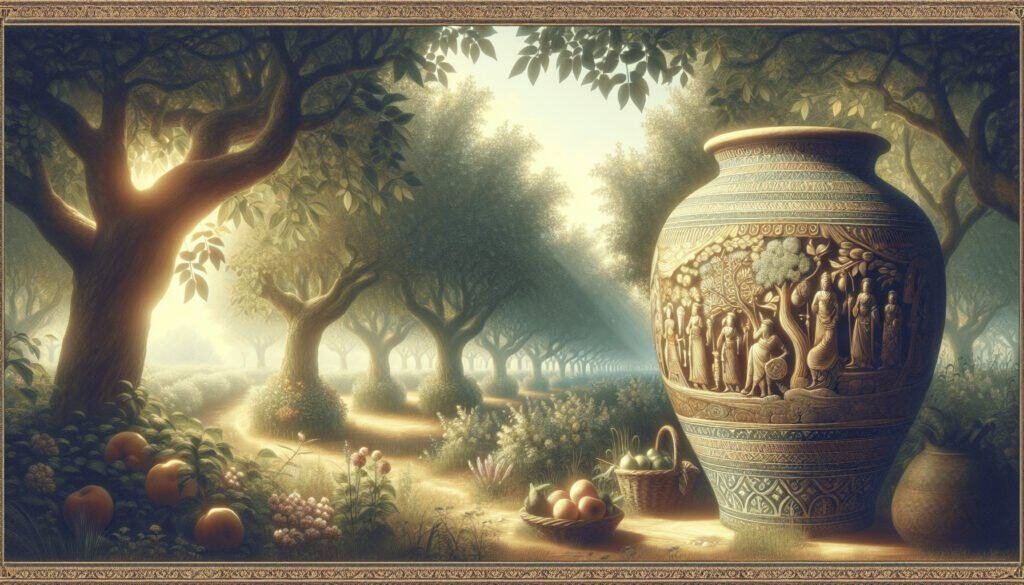What if I told you that a simple jar can open a window into the lives of a wandering sect whose rituals and beliefs are often shrouded in mystery? The Jordan Orchard Jar, a fascinating artifact, serves as a tangible link to an ancient world that practiced unique forms of worship. This piece not only tells a story about the people who used it but also invites us to ponder the significance of religious symbols and the role they play in community identity.

Understanding the Jordan Orchard Jar
What is the Jordan Orchard Jar?
The Jordan Orchard Jar is an archaeological find that dates back to an era when the region was a crossroads of cultures, ideas, and spiritual practices. It’s not just any jar; this artifact has become emblematic of the religious practices of a particular sect believed to have roamed the countryside, practicing their own forms of worship.
Historical Context
To truly appreciate the significance of the Jordan Orchard Jar, it’s essential to consider the historical backdrop against which it was used. The land surrounding the Jordan River has witnessed numerous civilizations and religious transformations over the millennia, from ancient Canaanite worship to early Christian practices. Each group left its mark, shaping the religious landscape of the region.
Key Features of the Jar
The jar itself is crafted from clay and is adorned with simple yet distinct markings. These inscriptions may not only identify the jar’s origin but also hold deeper spiritual meaning for its users. Analyzing the features of the jar, like its size, shape, and decorative elements, can yield insights into the cultural practices of its time.
The Wandering Sect: Who Were They?
A Brief Overview
Understanding the wandering sect that used the Jordan Orchard Jar requires you to step back into history. These groups often roamed in search of spiritual truth and community, distinct from established religious institutions. They engaged in nomadic lifestyles, prioritizing experiences over material wealth, which profoundly influenced their ceremonial practices.
Possible Origins
The origins of this sect are somewhat contentious among scholars, but they are often linked to groups such as the Essenes or other similar sects that valued asceticism and community living. Their writings and rituals emphasized a return to fundamental beliefs, making them a fascinating study for archaeologists and theologians alike.
Cultural Practices
The adopted cultural practices of the wandering sect were closely tied to their reverence for nature and the divine. They often regarded themselves as stewards of the land, which is why agriculture played a significant role in their worship rites. The Jordan Orchard Jar likely served a symbolic function in ceremonies related to harvest, sustenance, and gratitude.

The Role of the Jordan Orchard Jar in Worship
Symbolism of the Jar
You might wonder, why a jar? In many ancient cultures, jars held more than just practical purposes; they were imbued with symbolism. For the wandering sect, the Jordan Orchard Jar could symbolize abundance, spirituality, and a connection to the land that nourished them.
Ceremonial Functions
The jar likely played a central role in various ceremonies, possibly used to hold offerings or sacred oils. During rituals, it may have represented a vessel that bridged the physical and spiritual worlds, allowing practitioners to connect with the divine.
Rituals Associated with the Jar
Consider the awe-inspiring rituals these ancient peoples might have enacted around the jar. The pouring of oil into the vessel or the filling of it with the first fruits of the season would have not only been acts of devotion but also communal bonding experiences, reinforcing their shared beliefs and identity.
Archaeological Findings and Insights
Excavation of the Jar
The discovery of the Jordan Orchard Jar has intrigued archaeologists and historians alike. The context in which it was found—among other artifacts in a possible ritual site—offers clues about its significance. Excavation sites can sometimes tell an entire story, allowing you to piece together how rituals were practiced and the beliefs that formed their foundation.
Other Artifacts Found
Alongside the jar, other artifacts such as pottery, tools, and samples of agricultural products were uncovered, enriching our understanding of the sect’s everyday life. Each item can elucidate aspects of their spirituality, illustrating how intertwined their worship and practical life were.
Academic Perspectives
Scholarly articles have dissected the findings related to the Jordan Orchard Jar, generating diverse interpretations. Some argue it exemplifies a temple culture, while others emphasize its pastoral significance. What’s compelling is how these varying interpretations highlight the complexity of ancient beliefs and practices, inviting continuous dialogue among researchers.
Theological Implications
Symbolism in Ancient Texts
The jar can also be viewed through a theological lens when you consider its symbolism in the context of biblical texts. For instance, jars are often referenced in scripture as vessels of storage or as metaphors for humanity. This parallel can provide insight into how the wandering sect may have perceived their own existence and relationship to the divine.
Community and Identity
Worship practices around the jar likely fostered a sense of community. The shared rituals, centered on common beliefs, helped solidify group identity. In a world constantly shifting due to political and social factors, these practices would have provided a stabilizing force for the sect, offering them a unique sense of belonging.
Modern Perspectives on Ancient Worship
Relevance Today
What can we learn from the Jordan Orchard Jar in contemporary times? The themes of community, identity, and spirituality it represents remain relevant for many today. In an era marked by division, exploring historical practices of unity can inspire us to rethink how we connect with one another—across beliefs, backgrounds, and customs.
Cultural Conceptualizations
Understanding how different cultures engage with sacred objects can also enrich your appreciation for diverse spiritual expressions. The Jordan Orchard Jar invites a conversation about how artifacts serve as conduits of meaning, revealing the beliefs and values of those who use them.
Preservation of Memory
In today’s fast-paced society, the jar serves as a reminder of the importance of preserving rituals and teachings from the past. As cultures evolve, holding onto traditions like those of the wandering sect becomes essential for maintaining continuity and fostering understanding across generations.
Summary: Bridging Ancient and Modern Worlds
In the end, the Jordan Orchard Jar is more than just a relic; it’s a testament to the enduring nature of human spirituality and the complexities of our cultural heritage. It challenges you to think about how shared beliefs shape community identity and the lasting significance of ancient practices in today’s world. By connecting the dots between past and present, you gain valuable insight into the everyday lives and spiritual journeys of those who once roamed the lands of the Jordan River.
As we reflect on these historical elements, it’s essential to remember that the story of the Jordan Orchard Jar is not merely about religion; it’s about humanity’s quest for meaning, connection, and understanding—one jar at a time.


